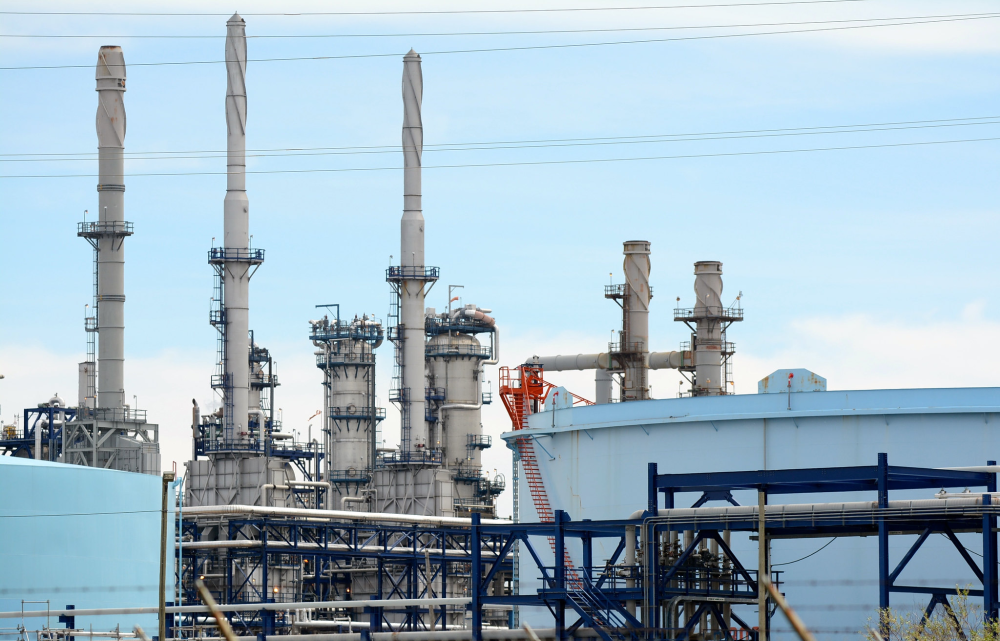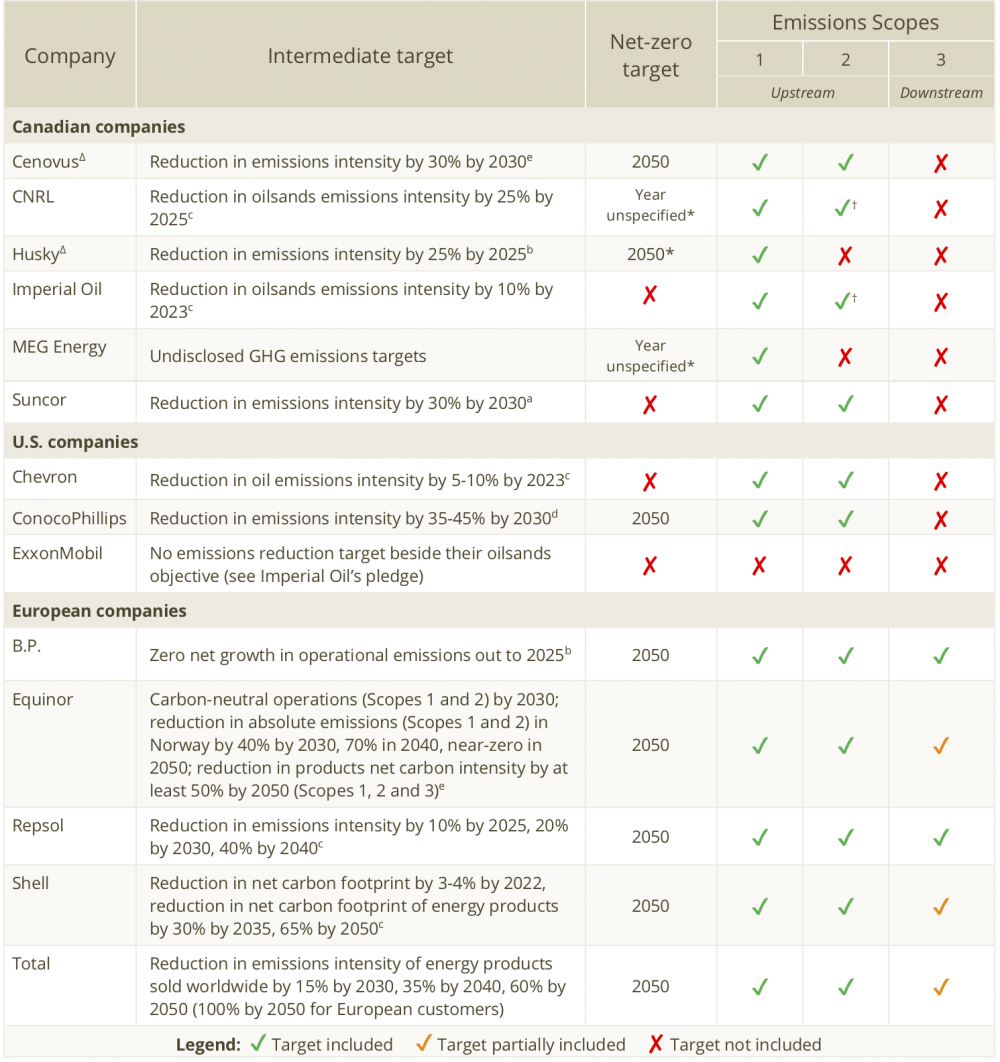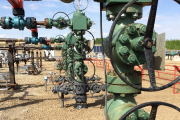This is the first in a series of pieces exploring the future of oil in a decarbonizing world, and the potential implications for Canada’s oil industry.
The oil and gas sector is facing increased pressure from investors, governments and civil society to show how it will help achieve the Paris Agreement objective of limiting the increase in global temperatures to 1.5 degrees Celsius. As a result, most global oil producers have voluntarily pledged to reduce greenhouse gas (GHG) emissions associated with their operations. The vast majority have committed to net-zero targets by 2050, in line with national objectives adopted in many countries including Canada. But not all pledges are equal, whether in terms of commitment, scope or ambition. So, how do the objectives of Canadian oil companies stack up against their U.S. and European counterparts?
Levels of commitment
Climate commitments toward global carbon neutrality in 2050 made by major Canadian, U.S. and European oil producers, as of November 2020, vary widely (see Table 1, below, which also lists intermediate milestones companies have promised, as well as the scopes of emissions they intend to address).
It is important to note that each pledge reflects a different level of commitment to net-zero operations. Some players are actively developing concrete plans with intermediate milestones; others have indicated their goal is “aspirational” or have omitted timelines for their net-zero objectives. While European companies pledge to address emissions through the supply chain — with Scope 1 and 2 emissions being that associated with oil production, and Scope 3 emissions being those emitted when using refined petroleum products, say, in a vehicle — not a single Canadian oil major has committed to addressing all three.
Differing emissions scopes
Further, the scope of emissions included in these pledges differs among companies.
The Greenhouse Gas Protocol, the world-leading GHG emissions accounting framework, categorizes emissions from a given organization as either Scope 1, 2 or 3 emissions. Upstream emissions broadly comprise Scope 1 emissions, those occurring at a company’s sites (for example those created in the process of producing oil), as well as Scope 2 emissions, which include those from the production of the energy purchased and used by the company (such as the emissions associated with the production of electricity consumed on site). For oil products, downstream emissions — Scope 3 emissions — primarily occur when refined petroleum products are combusted, for example in a car.
For most oil companies, upstream emissions account for approximately 20 to 30 per cent of the full life cycle emissions associated with the production, processing and use of refined petroleum products (Figure 1). Meanwhile, downstream emissions account for 70 to 80 per cent of the life cycle emissions.

As it relates to the climate pledges of oil companies, not all are committing to reducing their emissions across all three scopes. In fact, only European oil producers have committed to address some or all of their downstream emissions. On the other hand, Canadian and U.S. oil producers’ climate pledges only address upstream emissions, which account for only about 20 to 30 per cent of the emissions associated with their products.
Downstream emissions
Responsibility for downstream emissions has been a contentious issue for some in the industry. Yet, it is not unheard of in proposed responsible businesses principles. The Extended Producer Responsibility (EPR), for example, is an international policy approach “under which producers are given a significant responsibility [...] for the treatment or disposal of post-consumer products.” An EPR approach applied to refined petroleum products would see oil companies claim responsibility for the downstream emissions of their products.
More importantly, investors are expecting further ambition from oil and gas companies. Climate Action 100+ — an initiative involving more than 500 global investors with close to $50 trillion in assets — has called on corporations to adopt net-zero business strategies earlier this year. Specific to downstream emissions, the Climate Action initiative noted in its 2019 progress report that “for the oil and gas sector to align with the aims of the Paris Agreement, a focus on Scope 3 emissions reduction—likely via limitations on upstream capital expenditures—is critical.” While the question of reducing oil production is still an emerging conversation in Canada, the point is that credible climate plans must include downstream emissions.
Climate ambition equals competitiveness
Alongside their American counterparts, Canadian oil companies’ climate targets fall well short of the Europeans. Responding to climate science, investors and governments are putting pressure on oil companies to adopt more ambitious climate targets that include downstream (consumer) emissions, and — more importantly — to develop credible plans with intermediate milestones to meet such targets.
Along with costs, crude carbon intensity is expected to become a determinant metric of oil competitiveness as investors and governments call to accelerate the transformation of our energy systems. In fact, recent energy outlooks suggest that maintaining global warming below 1.5 degrees Celsius will drive a rapid decline in global oil demand in coming decades. Canada’s oil industry needs to react quickly — and ambitiously — to maintain market shares in a rapidly transitioning world.
Our next installment, to be released soon, will discuss recent energy outlooks that point to an imminent drop in global oil demand, and what this means for Canada.










